11 Nov 2024
Updated on March 25th, 2025
Unlocking the Power of Machine Learning in Web App Development
Shaun Bell
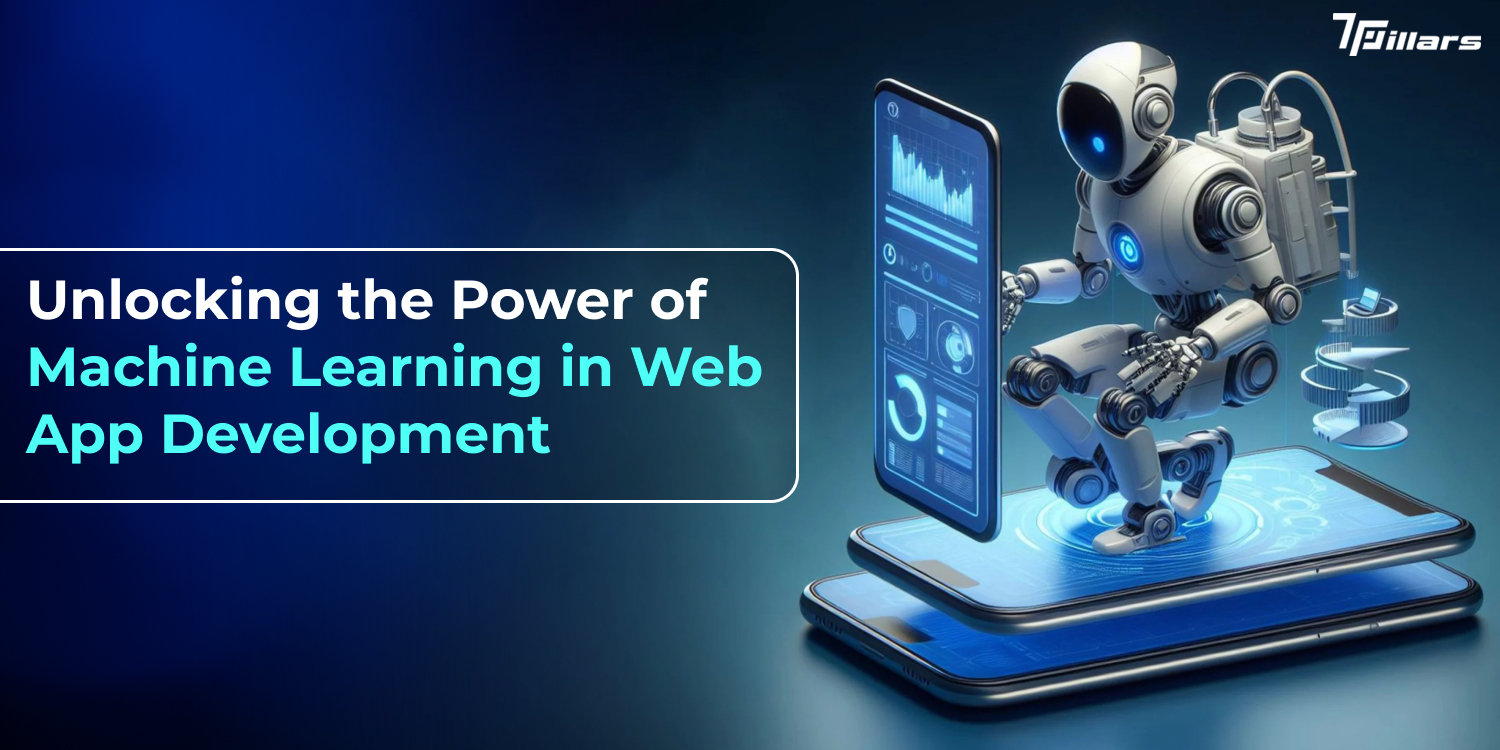
Web applications today, in the fast-growing digital environment, are developing faster than before, and machine learning (ML) is considered one of the core technologies that help in this regard. Machine learning makes applications intelligent and adaptive, allowing web applications to make appropriate decisions and offer better, more personalized, dynamic experiences. Although, a few years back, machine learning was restricted to research laboratories and complicated algorithms, it has now crawled into the mainstream of web app development service.
Fundamentally, and at its simplest, machine learning app development enables systems to improve from data and learn without being programmed to do it. This flexibility of using real-time data to extend and improve existing performance is a revelation in web applications. For developers, it means designing applications responsive to user activity and somewhat proactive – able to anticipate user behavior, suggest personalized content, and improve their results with each interaction based on more data. A web app development company can assist you in understanding the growing market.
Predictive Analytics: Transforming Web Apps for Smarter Business Responses
For instance, the action of the e-commerce site can provide a client with relevant offers based on the page viewed by the client or their history of purchases, while a streaming site can suggest content based on what the client has been watching. Apart from personalization, there are many other areas through which machine learning app development improves functionality. Machine learning application development uses these methods to build more powerful applications with better user customization features.
For instance, while using predictive analytics, web apps are in a position to predict trends or other actions by users so that businesses can respond appropriately. NLP-based chatbots used in this case can instantly offer human-like customer support and become more effective with the experience obtained from each interaction. It can also automate sophisticated work like detecting frauds, gaining insight into users’ behavior, and removing spam from unwanted messages. A web app development company leverages these capabilities to create smarter and more efficient machine learning applications.
When applied to web development and machine learning application development, machine learning app development brings applications to a new level of intelligence, flexibility, effectiveness, and user orientation. That is why many people consider ML to be at the center of the spectrum of next-gen Web applications, as there is virtually no limit to the developments we can observe in the given domain.
What Is Machine Learning?
Machine learning (ML) is a smaller branch of artificial intelligence (AI) that allows systems to make decisions from a data set without being programmed. Contrary to the fact that the system might be following rules predefined to develop a set of decisions, they study the data, search for patterns, identify trends, and use them to filter the systems’ performances and bring corrections if necessary. A web app development company can help you create a successful app using the latest trends in the industry.
As a discipline, machine learning is about creating predictive models that can incorporate new information into existing knowledge. These are the large databases in which the system learns to establish some correlation between the input (options that the user chooses, picture, or text) and the output (the decision made, prediction, or categorization). Machine learning application development companies use these technologies to construct applications which display intelligence through adaptive features.
The accuracy of the decision or prediction made by such a model increases with the amount of data it feeds on. There are three types of machine learning. If we classify it based on learning methods, it falls under three categories: supervised learning, unsupervised learning, and reinforcement learning. Supervised learning training data is known to be labeled data, which means that the inputs are related to the correct outputs so that the algorithm can map inputs to an output. Machine learning application development takes advantage of these strategies to improve both application capabilities and individualized features.
Unsupervised learning works with undifferentiated data, distinct from supervised learning, where the algorithm tries to discover some relations or clusters in the data. Reinforcement learning is a type of learning in which an “agent” plays a game in an environment, learns the pattern of movement, and receives some reward or penalty. Android mobile app development can also benefit from these learning techniques.
Machine learning app development has become a staple in various industries and is used in interactive product suggestions, intelligent voice devices, credit card and identity theft, and self-driving automobiles. Because of advancements in the
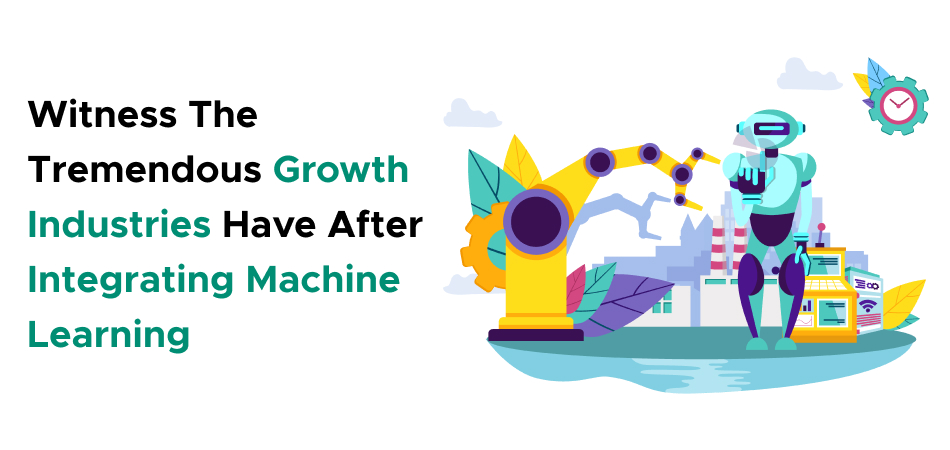
Growth Of Machine Learning In Australia
Machine learning (ML) has increased in Australia over the past few years due to technological progress, research and development, and organizational implementation. As one of the world leaders in the technology implemented in the country, Australia’s increasing number of industries converted to machine learning for development in the sectors already implementing ML the most—healthcare, finance, agriculture, and mining—are worth mentioning. The app development service creates innovative and efficient solutions through ML deployment across different industries.
Today, the primary AI and ML research and innovation centers are Australia’s leading institutions, including Australia Melbourne University and Australian Federal University. These institutions also help nurture domestic talent, pivotal in developing a nascent technological environment. The innovative capabilities of smartphones allow machine learning application development companies to create applications that function with greater intelligence and adaptability.
Recent government spending on the Artificial Intelligence Roadmap and research in AI ethics and governance has placed Australia at the forefront of artificial intelligence technology development in the region. There has also been an equivalent emergence of ML applications among Australian startups and tech giants in autonomous vehicles, natural language processing, and smart cities. Mobile app development service takes advantage of machine learning to generate innovative solutions which improve user experience for its various applications.
Large technology companies like Google, Amazon, and Microsoft are also based in Australia. Such machine learning app development services have added impetus to the growth of the machine-learning industry by supporting skills that foster innovation from within. Android application development enhances app capabilities through these methods which personalize the user experience.
Key Stats Showing Machine Language Growth In Australia
The growth of machine learning app development (ML) in Australia is underscored by several vital statistics that highlight its expanding impact across various sectors:
1. AI Market Growth
The artificial intelligence market in Australia will grow at a CAGR of 33.3 % from 2021 to 2026, and at the end of the mentioned year, the market size is expected to be AUD 12.3 billion. Businesses in the healthcare, finance, and manufacturing sectors, to name but a few, apply ML technologies more actively now than before. Mobile app development company solutions implement ML technology for innovative solutions that enhance operational excellence in various sectors.
2. Investment in AI Startups
Launched AI startups in Australia raised more than AUD 1.6 billion in 2022, demonstrating investors ‘ confidence in the Australian AI market. Mobile app development company solutions have started utilizing AI technology for driving innovative and efficient solutions among their industries. The approaches of intents and content providers serve Android application development for improving application functionality alongside user customization features.
3. University Research
Australian cities, including Sydney and Canberra, are home to some of the best universities in the world for conducting AI and ML research, including the University of Sydney and the Australian National University. These academics focus primarily on identifying and nurturing talent. The training of machine learning app development services continues to grow in these educational institutions.
4. AI Workforce Growth
The Australian Government’s AI strategy indicates that more than 10,000 new jobs related to AI will be created by 2025 due to an increased market for AI and related jobs, such as those in machine learning. Developers in machine learning app services implement these capabilities to construct applications that demonstrate higher levels of intelligence and adaptation.
5. Government Initiatives
The Australian Government has committed to spending over AUD 124 M to enable an environment of AI Growth as proposed by its AI Action Plan 2020. An Android application development company can help you create a new frontier program for your app.
These numbers show the fledging of MI in Australia’s economy and the prospect for further growth. App development service implements ML for the creation of efficient and innovative solutions across multiple industries. Mobile app development company solutions are integrating ML capabilities to create innovative solutions that boost efficiency in these business sectors.
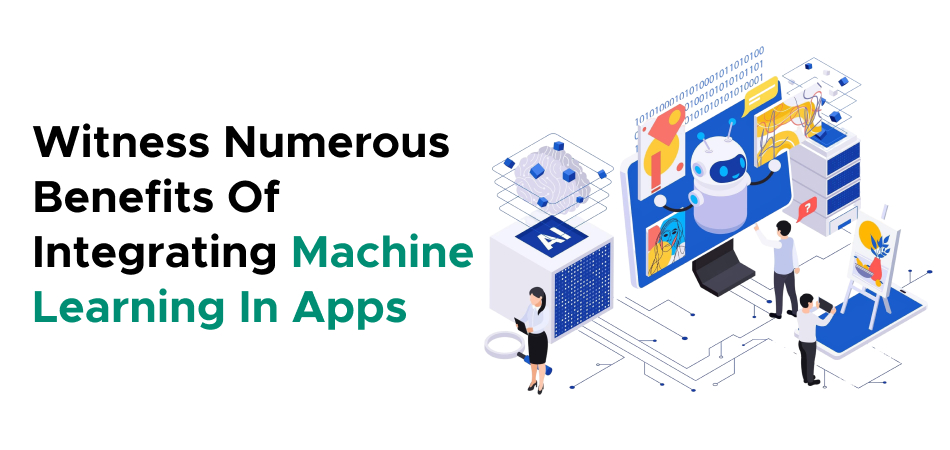
Why Use Machine Learning In Web App Development?
Machine learning emerged and affected almost all life segments, and the web app development sphere is no exception. When building new web applications or enhancing existing ones, developers can leverage ML to make these applications far more intelligent, engaging, and client-oriented. The following reasons explain why using machine learning for web app development is advantageous and has become more crucial.
1. Personalization
This presents advantages for personalization and user experience across the board. Web app personalization is one of the significant advantages of implementing machine learning in web application development processes. Most of the time, the ML algorithms can consider the user activities, preferences, and engagement to make recommendations, from products to content and machine learning app development services suitable for each user.
For instance, online shopping platforms such as Amazon or media streaming services like Netflix endorse using ML models to personalize the items or movies shared on the users’ dashboards, which results in increased clicks, sales, and positive consumer experiences. These systems adapt to user interactions and perform better as time passes, adding value to the utilization. Through ML application the app development service creates innovative solutions that show efficiency throughout various industries.
2. Optimization of Decisions by the Use of Data Analytics
The constantly growing nature of Web applications implies a constant accumulation of vast amounts of data during a given minute, and this is where Machine Learning can be used. Developers and business people can use trends, user treatment, and patterns detected by machine learning algorithms to arrive at sound conclusions. Mobile app development service utilizes ML for innovative user experience developments across these fields.
In particular, it can be used by e-commerce providers to predict demand for certain products, control inventory, and even forecast sales, as well as by content-oriented sites to analyze user preferences to adjust and improve the marketing model and content presentation. Through these capabilities mobile application development companies create better programs that adapt according to changing conditions.
3. Computerisation of Repetitive Working Processes
Some machine learning applications automate the processes that would otherwise demand a lot of time for one to do them. For instance, the models can analyze data and alert security of potentially fraudulent activities in credit card transactions or which content is suitable for posting on social networks.
Another way is to use other tools called “chatbots,” which can talk with the user, answer their questions, and meet their needs all day and night through NLP. The efficiencies gained from automating these processes are not trivial, and the potential for error is minimized. Machine learning in mobile app development is incorporated in Android mobile app development to improve how users interact with these applications.
4. Improved Security
Security has become a big speed-breaker in the electronic world, and ML can be very useful in improving web application security. Such ML models hunt for patterns or anomalies that may indicate a security breach, including a hacker log-in or other kinds of breaches. A web app development company can help you understand the benefits of tML in web app development.
The systems may then generate the resultant alerts or take real-time preventive action. In addition, ML-based systems learn new threats over time, making them better able to spot novel attack vectors, unlike traditional security systems, whose rule sets are preconfigured. The machine learning in mobile app development service utilizes AI for improving innovation and creating better user experiences in their domain.
5. Advanced Search and Recommendation Systems
For many web applications, search functionality is essential; machine learning can significantly enhance this. ML techniques like semantic search and NLP upgrade search engines in web applications to analyze intent from user queries, produce more relevant results, and adapt according to user’s preferences over time.
Recommendation algorithms, such as collaborative filtering, also determine products, articles, or machine learning app development services for recommendation based on behavior by other similar users, enhancing user satisfaction and engagement.
6. Scaling and Performance Tuning
Machine learning can better scale and perform web applications. For example, it can forecast and adjust server loads based on user traffic patterns, ensuring smooth user experiences during peak-demand days. Machine learning may also optimize resources through points of weakness, enhanced algorithms, and tailored performance in web apps. Considering user volume increments or new performance challenges, these models will adjust automatically. Machine learning app development services utilize these capabilities to construct applications which are both intelligent and adaptable in nature.
7. Competitive Advantage
Lastly, machine learning in web application development contributes to a competitive advantage. For instance, advanced personalization via predictive analytics or enhanced security through ML-powered features can be a difference-maker in crowded markets. Businesses more likely to benefit from machine learning are the ones that will remain ahead of the competition by offering features that reflect the expectations of modern users. The mobile app development service uses ML to create new innovative features and boost user experience in these domains.
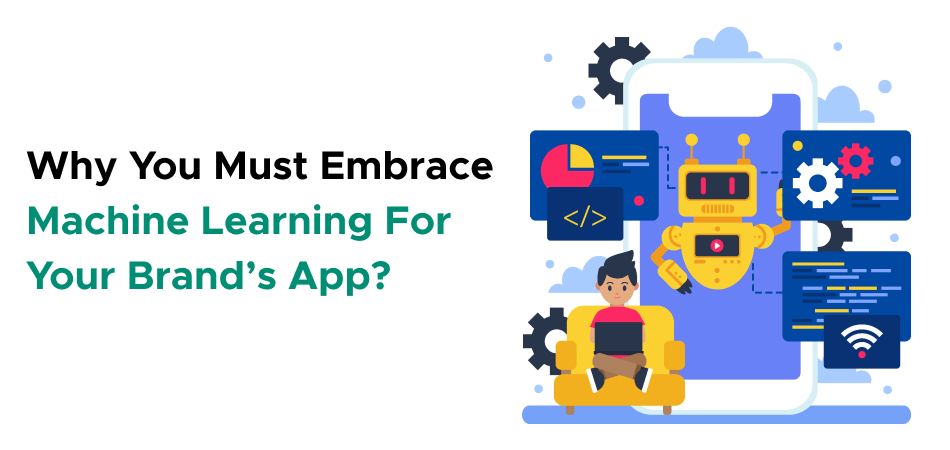
8. Natural Language Processing for Chatbots and Virtual Assistants
Machine learning, especially NLP, is the crucial basis for developing intelligent chatbots and virtual assistants in web applications. This enables chatbots to deploy real-time understanding and responses to user queries, providing seamless and highly efficient customer support. For example, it can be the GPT (Generative Pre-trained Transformer) or BERT (Bidirectional Encoder Representations from Transformers), among other like models; they can learn from user input, analyze intent, and respond like a human. Thus, it offers businesses the option to provide 24/7 support and automated customer service and better satisfies users upon resolving the customer’s query.
9. Business Intelligence by way of Predictive Modeling
Machine learning enables web apps to perform predictive analysis, have access to an extensive historical database, and the ability to predict their future. For example, Software as a Service applications predict customer attrition, sales, or demand for certain commodities. Machine learning in mobile app development implements chatbots as an enhancement to user interactions.
Web apps offer vital information resources for analyzing customer behavior, usage frequency, interaction rates, and subscription rates; web apps can determine the customer’s planning to cancel, take action, and reduce churn. Likewise, in an e-commerce context, the same approach can be used to predict supplies in stock in the future or future customer purchasing patterns depending on specific characteristics of the year to exist. The information gathered assists mobile app development service to improve user interaction levels while enhancing business strategy optimization.
10. Image and Video Recognition
Machine learning facilitates image and video interpretation in web apps tied to media. With deep learning models in web apps, pictures and videos can be automatically tagged, categorized, and even searched based on their content.
For instance, Instagram and Facebook have incorporated ML algorithms such as object recognition within photos, people, and scenes, thus generating automatic tags and suggested searches. In e-commerce, ML can analyze product images and specific areas, such as image-search functionality and related research. Mobile application development implements ML functionalities to improve user interaction and enhance program operations.
11. A/B Testing and Optimization
It also extends A/B testing and enhances web application development to another level by using machine learning. Initially, we used A/B testing to compare two pages or the two features in the display to see which was better. Machine learning, however, automates this process with continually adjusted and optimized variations based on real-time user behavior and interaction data. The capabilities of modern technology allow Mobile application development companies to construct smarter and more adaptable applications.
For instance, a website might use reinforcement learning to continuously optimize its user interface or call-to-action buttons, enabling real-time changes to maximize the user experience and transform more users.
Types Of Machine Learning Algorithms?
ML is a subset of artificial intelligence popularly defined as the computer’s ability to process data without prior programming automatically. It comprises different methods by which the Chinese can learn, decide, and forecast.
There are three dominant types of machine learning algorithms: classification of supervised learning, classification of unsupervised learning, and reinforcement learning. Several unique algorithms are employed among these classifications depending on the data type and problem condition.
1. Supervised Learning
It is machine learning wherein the algorithm is trained on labeled data of input-output pairs. The model finds the relationship between the inputs and their labels from the given set of inputs and outputs to minimize the error according to a particular loss function. A trained model can then predict outcomes from new, unseen data. These machine learning models become integrated within mobile application development to produce more efficient applications that are also more intelligent.
The approach applies to data classification, prediction, image recognition, and predictive analytics. The effectiveness of supervised learning depends more on the quality and quantity of the training data and its ability to be generalized. It finds applications, particularly in natural language processing and image recognition.
2. Unsupervised Learning
Unsupervised learning is a type in which the number of groups or clusters that must be discovered in the data is specified. It attempts to search for a set of rules or a pattern that is a structure or another relationship within the provided data set. Many methods are applied, such as clustering (K-means) to join similar points and dimensionality reduction (CA) to decrease the number of features. The techniques from the usability paradigm provide Android app development with methods to optimize application capabilities and user experience customization.
It stands opposite to the Supervised learning strategy since the model is not trained with pre-labeled data for this method to predict the exact output. Instead, it works for different types of learning tasks of unlabelled data where the accurate label information is not known or not available, such as Anomaly detection, Customer segmentation, Data exploration, etc.
3. Semi-supervised Learning
Semi-supervised learning is a method in which a small training set is used together with an unlabelled large set. It is situated between supervised learning, which uses only the labeled data sets, and unsupervised learning, which uses only the unlabeled data. A machine learning app development company can help you learn all about Semi-supervised learning.
The concept uses many unlabelled samples to enhance the current model’s efficiency with minimum labeling requirements. The model generates labeled and unlabeled data patterns where self-training or graph-based techniques may be applied. It is beneficial when labeling the data is expensive or impractical while plenty of unlabeled data is available.
4. Reinforced Learning
Reinforcement Learning is a machine learning branch in which an SHM (system health management) agent interacts with the environment. The primary forms of agent action are actions, and results are given as rewards or penalties. The objective is to achieve maximum total reward over time.
The agent uses this feedback to modify its approach to provide better performance, known as the strategy or policy. RL is mainly applied in problems such as game playing, robotics, and self-driven cars. These are called the agent, the environment, the possibilities of action, the evaluations or rewards, and a decision-making principle or policy.
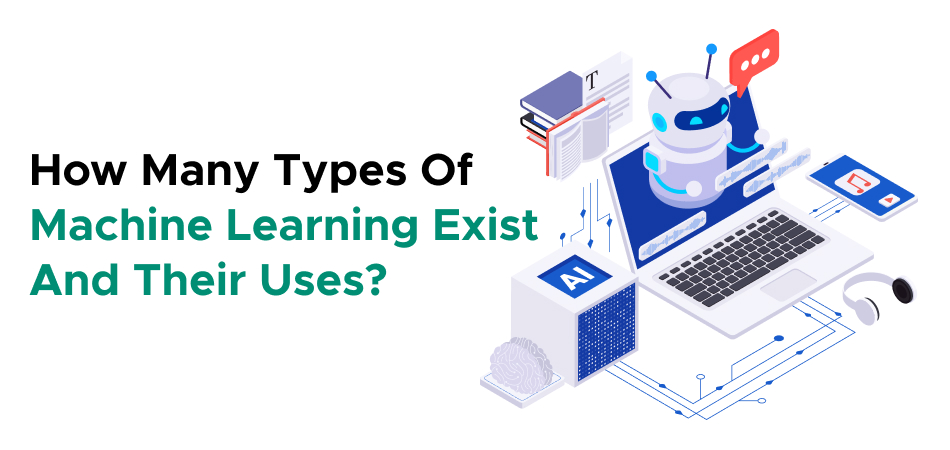
How Machine Learning is Transforming Web Application Development
1. Coding Assistant
Generally, self-learning or machine learning (ML) increases a programmer’s warfare manufacturing productivity and city, automating programs like code generation, debugging, and optimization. In this way, ML tools help developers free their valuable time to concentrate more on the creative aspects of software engineering, such as designing new algorithms for solving complex tasks. The application of SEO AI leads to enhanced visibility together with improved user engagement in Android app development.
Moreover, it allows for getting prognoses, recommends improving and optimizing something, or identifies the problem before it occurs using machine learning. This leads to better cycle times, fewer mistakes, and the creation of better-quality software in less time. Finally, it is for the programmers to obtain a superior outcome with augmented productivity from the application of ML. Mobile application development implements these ML capabilities for delivering improved user experiences with optimized application functions.
2. ADI
Artificial Design Intelligence streamlines designing quality, well-designed e-commerce websites by integrating design principles with a machine. A few simple questions, which have to be answered by users in response to their choice in style, functionality, and target audience, can all be customized to the website according to needs and requirements. A machine learning app development company can help you understand the role of ADI in app development.
With such substantial training data sets, ADI can automatically recommend the best possible layouts, schemes, and features that will be visually attractive and user-friendly. This technology saves time and provides professional outputs without requiring advanced design skills. Businesses can speed up and quickly launch a functional, beautiful e-commerce site with user expectations and industry standards with the help of ADI.
3. Search Engine Optimisation
Selecting the keywords, phrases, or content themes relevant to the SEO process takes time and effort. However, an SEO AI can save all the time used to filter out trends, volume of searches, and competition for respective categories of keywords. The optimization of app visibility together with user engagement is a benefit that Android app development receives from SEO AI.
In addition to keyword suggestions, the AI can develop interesting headlines, content ideas, and topics to write about related to user intent and search engines. The suggestions above can be incorporated into the content creation process to help you reach the top of the search engine. Besides, it saves precious time and facilitates the broader and more specific dissemination of content. Mobile application development leverages AI capabilities for improving UX elements and functional optimization of applications.
4. Dynamic Content Personalisation
Therefore, companies must shift from conventional communications to keep customers guessing in the face of competition. Traditional promotional strategies feature gaps because dynamic content customization using artificial intelligence is a solution that utilizes data about users and their behaviors to adapt the content. Using big data, AI is capable of identifying trends in the types of interactions customers have and defining what age representatives consider critical. A reliable machine learning app development company can help you transform your business.
This allows any business to present highly customized content in real-time, thus optimizing each touch point. Therefore, users spend more time on websites, the likelihood of bounce rate decreases, and other key indicators of effectiveness increase, which makes customers more loyal.
5. Web Testing
Creating and running tests for the website code is quite a complex process that involves solving additional code-level iterations. There will always be changes in the code to look out for that may affect the code’s functionality during testing, and this process can be very tedious, mainly when performing routine tests. An Android app development company can assist you in understanding the latest trends in the industry,.
However, simple tests and their maintenance can be performed much better with the help of AI. AI tools can, on their own, perform testing, interpret results, and raise exceptions, allowing developers to address more critical aspects. These automations enhance the testing process productivity and the overall cycle and minimize human errors.
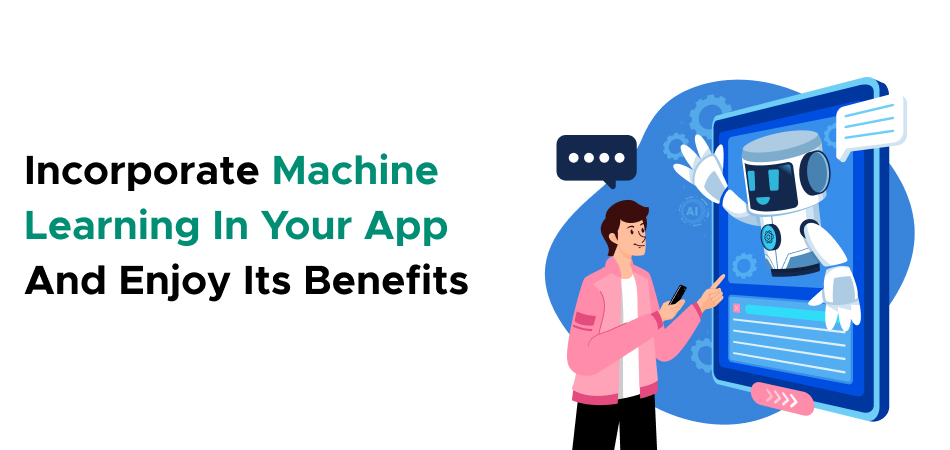
Conclusion
Thus, the employment of machine learning in web app development is changing how today’s applications are created and consumed. As the engine that lets developers build more effective features based on common behavioral patterns, machine learning adds value to the web application by making it far more intelligent and sensitive to user habits.
Incorporating machine learning technologies in an app-developing firm can improve user experiences, efficiency, traffic, and relationships between the app and users. With the progression of machine learning algorithms, the idea of developing new and practical web applications is almost endless.
An android app development company uses machine learning when developing mobile applications. Considering speech recognition, image analysis, and other machine learning features, Android applications can better recognize user actions and more appropriate answers based on its principles.
Therefore, any app development company that wants to remain relevant and have the upper hand in a competitive world must incorporate machine learning to meet their client’s needs in the best and most innovative ways. Machine learning models enable mobile application development to achieve more efficient operations through their integration.
However, a machine learning app development company creates more efficient applications with machine learning frameworks, scalability, and a flexible list of solutions for particular users. This benefits organizations involved in mobile and growing web-based platforms, where users’ expectations constantly increase.
Therefore, integrating machine learning into web app development introduces a new frontier for app development that offers the functions of an intelligent and adaptive application. Thus, as the industry further expands, the companies that embrace and advance these technologies will be better placed to drive the coming wave of web and mobile applications. Partner with our technocrats at 7 Pillars, a reliable machine learning app development company, to create your dream app using machine learning.








